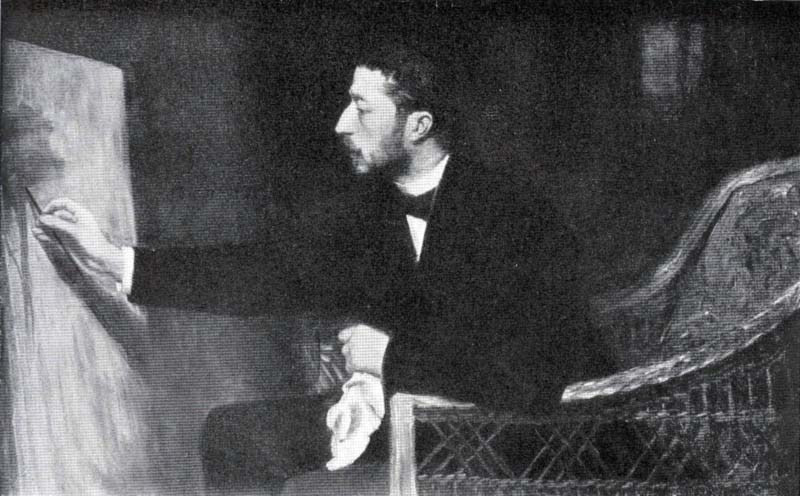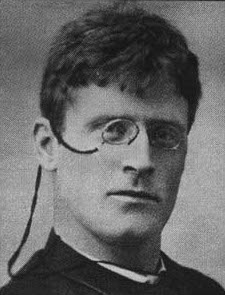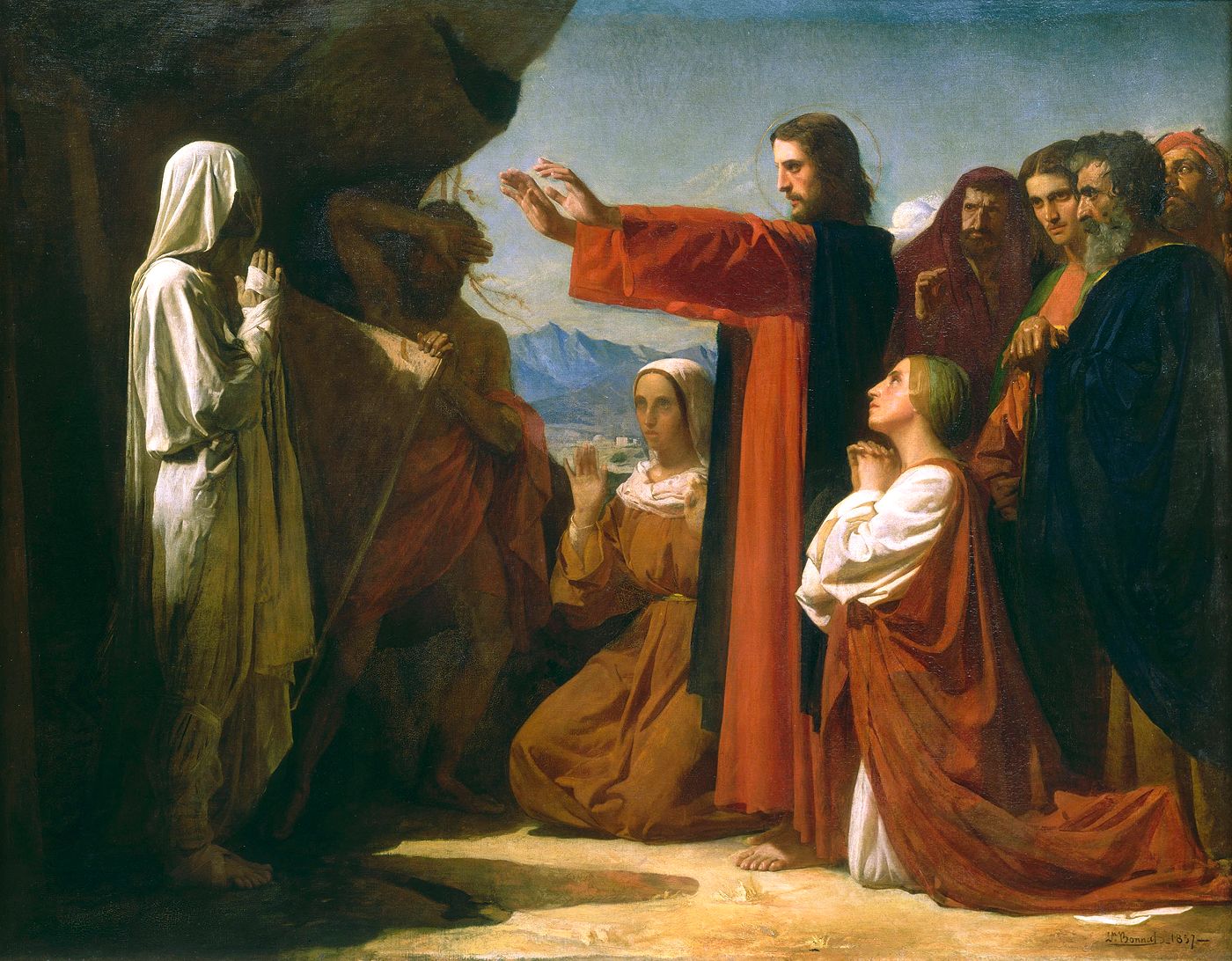|
Prince Eugen, Duke Of Närke
Prince Eugen Napoleon Nicolaus of Sweden and Norway, Duke of Närke (1 August 1865 – 17 August 1947) was a Swedish painter, art collector, and patron of artists. Background Prince Eugen was born at Drottningholm Palace as the fourth and youngest son of Prince Oscar, Duke of Östergötland. His mother was Sophia of Nassau. The newborn prince was granted the title of Duke of Närke. Upon his father's accession to the thrones of Sweden and Norway as King Oscar II, the Duke of Närke became fourth in line to the throne. Showing early artistic promise, he studied in Paris, and went on to become one of Sweden's most prominent landscape painters. Throughout his life Prince Eugen was a supporter of fellow artists, and also involved in many cultural organisations and committees. A homosexual bachelor, he bequeathed his villa Waldemarsudde at Djurgården in Stockholm, and its collections, to the nation. It is now one of Sweden's most popular museums. Norway The Duke of Närke ... [...More Info...] [...Related Items...] OR: [Wikipedia] [Google] [Baidu] |
Duke Of Närke
Duke of Nericia or Duke of Närke is a Swedish substantive title. This is a list of Swedish princes who have held Närke as duke: * Prince Carl, Duke of Nericia 1560–1604 (also of Södermanland and Värmland), then King Carl IX of Sweden * Prince Carl Philip, Duke of Nericia 1607–1618 (also of Södermanland and Värmland), brother of King Gustav II Adolf * Prince Eugen (1865–1947), Duke of Nericia, brother of King Gustaf V of Sweden. Närke vapen.svg, Coat of Arms of Närke File:Charles IX of Sweden.jpg, Charles IX of SwedenDuke of Nericia Carl Philip of Sweden (1601) medallion 1905.jpg, Prince Carl Philip(1601–1622) Anders Zorn - Prins Eugen 1910.jpg, Prince Eugen,Duke of Närke Coat of arms of Prince Eugen, Duke of Närke (1905-1947).svg, Coat of Arms of Prince Eugen, Duke of Närke Prince Eugen Napoleon Nicolaus of Sweden and Norway, Duke of Närke (1 August 1865 – 17 August 1947) was a Swedish painter, art collector, and patron of artists. Background P ... [...More Info...] [...Related Items...] OR: [Wikipedia] [Google] [Baidu] |
Knut Hamsun
Knut Hamsun (4 August 1859 – 19 February 1952) was a Norwegian writer who was awarded the Nobel Prize in Literature in 1920. Hamsun's work spans more than 70 years and shows variation with regard to consciousness, subject, perspective and environment. He published more than 20 novels, a collection of poetry, some short stories and plays, a travelogue, works of non-fiction and some essays. Hamsun is considered to be "one of the most influential and innovative literary stylists of the past hundred years" (''ca.'' 1890–1990). He pioneered psychological literature with techniques of stream of consciousness and interior monologue, and influenced authors such as Thomas Mann, Franz Kafka, Maxim Gorky, Stefan Zweig, Henry Miller, Hermann Hesse, John Fante and Ernest Hemingway. Isaac Bashevis Singer called Hamsun "the father of the modern school of literature in his every aspect—his subjectiveness, his fragmentariness, his use of flashbacks, his lyricism. The whole modern sc ... [...More Info...] [...Related Items...] OR: [Wikipedia] [Google] [Baidu] |
Mälaren
Mälaren ( , , or ), historically referred to as Lake Malar in English, is the third-largest freshwater lake in Sweden (after Vänern and Vättern). Its area is 1,140 km2 and its greatest depth is 64 m. Mälaren spans 120 kilometers from east to west. The lake drains, from south-west to north-east, into the Baltic Sea through its natural outlets Norrström and Söderström (as it flows around Stadsholmen island) and through the artificial Södertälje Canal and Hammarbyleden waterway. The easternmost bay of Mälaren, in central Stockholm, is called Riddarfjärden. The lake is located in Svealand and bounded by the provinces of Uppland, Södermanland and Västmanland. The two largest islands in Mälaren are Selaön (91 km2) and Svartsjölandet (79 km2). Mälaren is low-lying and mostly relatively shallow. Being a quite narrow and shallow lake, Mälaren has bridge crossings between Eskilstuna and Västerås with two crossings on the western end at Kvicksund and t ... [...More Info...] [...Related Items...] OR: [Wikipedia] [Google] [Baidu] |
Landscape Painting
Landscape painting, also known as landscape art, is the depiction of natural scenery such as mountains, valleys, trees, rivers, and forests, especially where the main subject is a wide view—with its elements arranged into a coherent composition. In other works, landscape backgrounds for figures can still form an important part of the work. Sky is almost always included in the view, and weather is often an element of the composition. Detailed landscapes as a distinct subject are not found in all artistic traditions, and develop when there is already a sophisticated tradition of representing other subjects. Two main traditions spring from Western painting and Chinese art, going back well over a thousand years in both cases. The recognition of a spiritual element in landscape art is present from its beginnings in East Asian art, drawing on Daoism and other philosophical traditions, but in the West only becomes explicit with Romanticism. Landscape views in art may be entirely ... [...More Info...] [...Related Items...] OR: [Wikipedia] [Google] [Baidu] |
Store Norske Leksikon
The ''Great Norwegian Encyclopedia'' ( no, Store Norske Leksikon, abbreviated ''SNL''), is a Norwegian-language online encyclopedia. The online encyclopedia is among the most-read Norwegian published sites, with more than two million unique visitors per month. Paper editions 1978–2007 The ''SNL'' was created in 1978, when the two publishing houses Aschehoug and Gyldendal merged their encyclopedias and created the company Kunnskapsforlaget. Up until 1978 the two publishing houses of Aschehoug and Gyldendal, Norway's two largest, had published ' and ', respectively. The respective first editions were published in 1907–1913 (Aschehoug) and 1933–1934 (Gyldendal). The slump in sales for paper-based encyclopedias around the turn of the 21st century hit Kunnskapsforlaget hard, but a fourth edition of the paper encyclopedia was secured by a grant of ten million Norwegian kroner from the foundation Fritt Ord in 2003. The fourth edition consisted of 16 volumes, a t ... [...More Info...] [...Related Items...] OR: [Wikipedia] [Google] [Baidu] |
Pierre Puvis De Chavannes
Pierre Puvis de Chavannes (14 December 1824 – 24 October 1898) was a French people, French Painting, painter known for his mural painting, who came to be known as "the painter for France". He became the co-founder and president of the Société Nationale des Beaux-Arts, and his work influenced many other artists, notably Robert Genin, and he aided Medalist, medallists by designs and suggestions for their works. Puvis de Chavannes was a prominent painter in the early French Third Republic, Third Republic. Émile Zola described his work as "an art made of reason, passion, and will". Early life and education Puvis de Chavannes was born Pierre-Cécile Puvis in a suburb of Lyon, France, on December 14, 1824. He was the son of a mining engineer and descended from an old noble family of Burgundy (region), Burgundy. He later added the ancestral "de Chavannes" to his name. Throughout his life, he spurned his Lyon origins, preferring to identify himself with the 'strong' blood of the ... [...More Info...] [...Related Items...] OR: [Wikipedia] [Google] [Baidu] |
Henri Gervex
Henri Gervex (Paris 10 December 1852 – 7 June 1929 Paris) was a French painter who studied painting under Alexandre Cabanel, Pierre-Nicolas Brisset, and Eugène Fromentin. Biography Early years He was the son of Joséphine Peltier and Félix Nicolas Gervex, a piano maker. When he was 15, a friend of the family helped him get admitted to the atelier of Pierre-Nicolas Brisset. Three years later, he served in the 152nd Battalion of the National Guard. In 1871 he was accepted into the École des Beaux-Arts in the studio of Alexandre Cabanel, where he studied for five years along with Jean-Louis Forain, Fernand Cormon, and Eugène Damas, a landscape painter. He also apprenticed himself to the Orientalist painter Eugène Fromentin. Debut His early work belonged almost exclusively to the mythological genre, which served as an excuse for the painting of the nude, but not always in the best of taste. His ''Rolla'' of 1878, based on a poem by Alfred de Musset, was rejected by the jury o ... [...More Info...] [...Related Items...] OR: [Wikipedia] [Google] [Baidu] |
Alfred Philippe Roll
Alfred may refer to: Arts and entertainment *''Alfred J. Kwak'', Dutch-German-Japanese anime television series * ''Alfred'' (Arne opera), a 1740 masque by Thomas Arne * ''Alfred'' (Dvořák), an 1870 opera by Antonín Dvořák *"Alfred (Interlude)" and "Alfred (Outro)", songs by Eminem from the 2020 album ''Music to Be Murdered By'' Business and organisations * Alfred, a radio station in Shaftesbury, England *Alfred Music, an American music publisher *Alfred University, New York, U.S. *The Alfred Hospital, a hospital in Melbourne, Australia People * Alfred (name) includes a list of people and fictional characters called Alfred * Alfred the Great (848/49 – 899), or Alfred I, a king of the West Saxons and of the Anglo-Saxons Places Antarctica * Mount Alfred (Antarctica) Australia * Alfredtown, New South Wales * County of Alfred, South Australia Canada * Alfred and Plantagenet, Ontario * Alfred Island, Nunavut * Mount Alfred, British Columbia United States * Alfred, Maine, ... [...More Info...] [...Related Items...] OR: [Wikipedia] [Google] [Baidu] |
Léon Bonnat
Léon Joseph Florentin Bonnat (20 June 1833 – 8 September 1922) was a French painter, Grand Officer of the Légion d'honneur and professor at the Ecole des Beaux Arts. Early life Bonnat was born in Bayonne, but from 1846 to 1853 he lived in Madrid, where his father owned a bookshop. While tending his father's shop, he copied engravings of works by the Old Masters, developing a passion for drawing. In Madrid he received his artistic training under Madrazo. He later worked in Paris, where he became known as a leading portraitist, never without a commission. His many portraits show the influence of Velázquez, Jusepe de Ribera and other Spanish masters, as well as Titian and Van Dyke, whose works he studied in the Prado, which placed him at the forefront of painting in France in the 1850s, opposing neoclassicism and academicism. Following the period in Spain, Bonnat worked the studios of the history painters Paul Delaroche and Leon Cogniet (1854) in Paris. Despite repeated attem ... [...More Info...] [...Related Items...] OR: [Wikipedia] [Google] [Baidu] |
Wilhelm Von Gegerfelt
Wilhelm von Gegerfelt, also Vilhelm von Gegerfelt, (9 November 1844 – 2 April 1920) was a Sweden, Swedish painter. Biography Born in Gothenburg, Gegerfelt was the son the architect Victor von Gegerfelt (1817–1915). From 1861 to 1863, he studied at the Royal Danish Academy of Fine Arts, Royal Danish Academy, at the Royal Swedish Academy of Fine Arts, Royal Swedish Academy from 1864 to 1867, and thereafter in Düsseldorf until 1872. He then went to Paris where he developed a new technique joining Alfred Wahlberg as one of the first Swedes to represent the Modern Breakthrough in Nordic art. He travelled to the north coast of France, to Italy and to England, painting landscapes of Venice's lagoons and the English chalk cliffs, in addition to scenes of summer evenings in Sweden. His works can be seen in the Nationalmuseum, National Museum in Stockholm, in the Gothenburg Museum of Art and in Skagens Museum. Gegerfelt exhibited in Monaco from 1883 and won a silver medal at the Vie ... [...More Info...] [...Related Items...] OR: [Wikipedia] [Google] [Baidu] |
Hans Gude
Hans Fredrik Gude (March 13, 1825August 17, 1903) was a Norwegian romanticist painter and is considered along with Johan Christian Dahl to be one of Norway's foremost landscape painters. He has been called a mainstay of Norwegian National Romanticism. Gunnarsson 1998, p. 104 He is associated with the Düsseldorf school of painting. Gude's artistic career was not one marked with drastic change and revolution, but was instead a steady progression that slowly reacted to general trends in the artistic world. Gude's early works are of idyllic, sun-drenched Norwegian landscapes which present a romantic, yet still realistic view of his country. Around 1860 Gude began painting seascapes and other coastal subjects. Gude had difficulty with figure drawing initially and so collaborated with Adolph Tidemand in some of his painting, drawing the landscape himself and allowing Tidemand to paint the figures. Later Gude would work specifically on his figures while at Karlsruhe, and so began pop ... [...More Info...] [...Related Items...] OR: [Wikipedia] [Google] [Baidu] |


.jpg)





